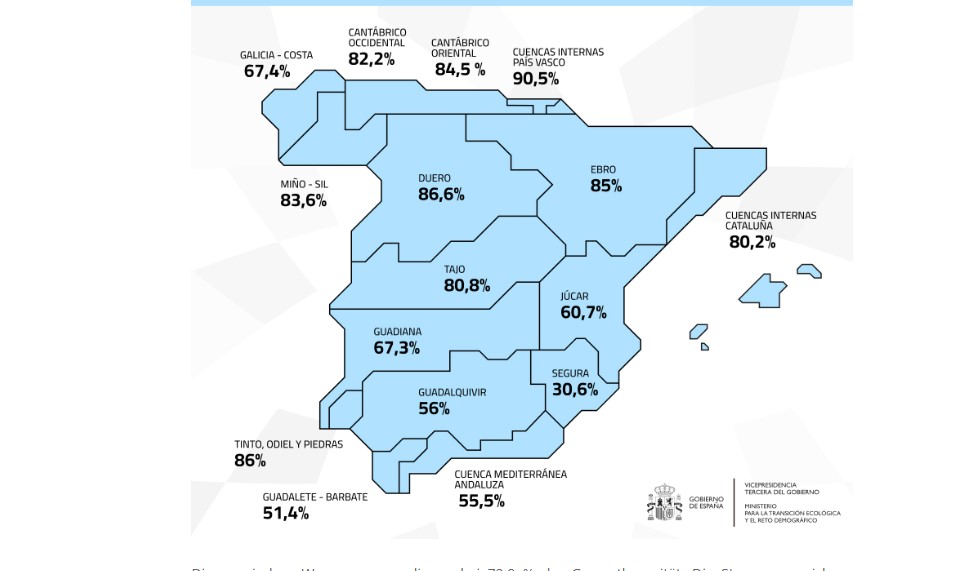The ongoing heatwave in Spain and much of Europe is leaving clear marks on the Spanish reservoirs. As July begins, the country’s water reserves are showing another decline, which is already the fifth consecutive week. This development raises questions about long-term water security, although the current situation is still considered optimistic compared to last year.
Five Consecutive Weeks: The Numbers Speak for Themselves
According to figures released on Tuesday by the Ministry for Ecological Transition, Spanish reservoirs lost 809 cubic hectometers of water last week. This corresponds to a decrease of 1.44 percentage points of their total capacity. The current filling level of the water reserve is now at 72.93% with a total of 40,869 cubic hectometers of water.
Despite these recent declines, it is important to emphasize that the situation is significantly better than last year. Twelve months ago, the reservoirs’ filling level was only 63.69% with 35,600 cubic hectometers of water. This means that Spain’s current water reserves are still around nine points above the 2024 figures. A positive picture also emerges when comparing with the ten-year average: the average for this week over the last decade was 60.4% (33,850 cubic hectometers), meaning the current reserve is even twelve points higher.
Regional Differences: Where Water Is Becoming Scarcer
The general decline in water levels is due to water loss in almost all Spanish river basins. Of the total of 16 basins on the Iberian Peninsula, only Eastern Cantabria maintained its filling level at 82.1%. All other basins recorded a decrease.
Particularly affected were the inland basins of the Basque Country, which experienced the sharpest decline of all basins – by up to 4.76 points. Nevertheless, at 90.48%, they still lead among Spanish basins with the best figures. They are followed by the Duero River at 86.6%, which also experienced a significant drop of 2.12 points in just seven days. Other important rivers such as Tinto, Odiel, and Piedras are at 86%, the Ebro at 85%, Miño-Sil at 83.6%, and Western Cantabria at 82%.
The Tagus also continues to show good values at 80.8%. The recovery of Catalonia’s inland basins is remarkable; they were affected by a drought crisis a year ago and are now at a robust 80.2%.
The basins with the currently lowest filling levels are still located in the southeast of the peninsula. While the Andalusian Mediterranean (55.5%) and Guadalete-Barbate (51.4%) still show acceptable values, the Segura basin in Murcia, at only 30.6%, is unfortunately the leader with the lowest water levels on the entire peninsula.
The current situation continues to require careful water management and monitoring of weather developments to secure drinking water supply and agricultural use in the long term.




